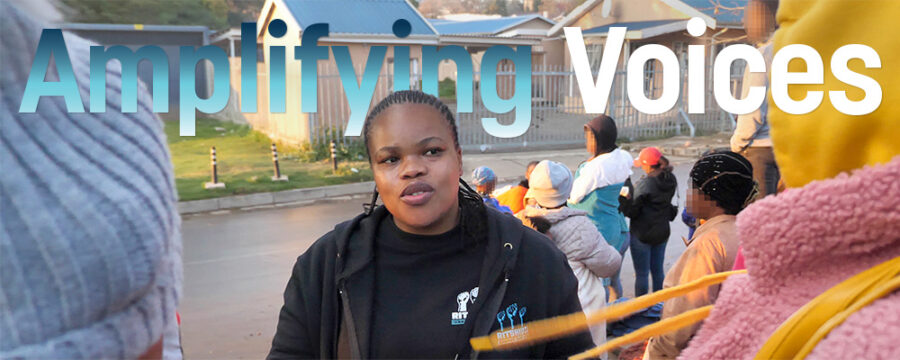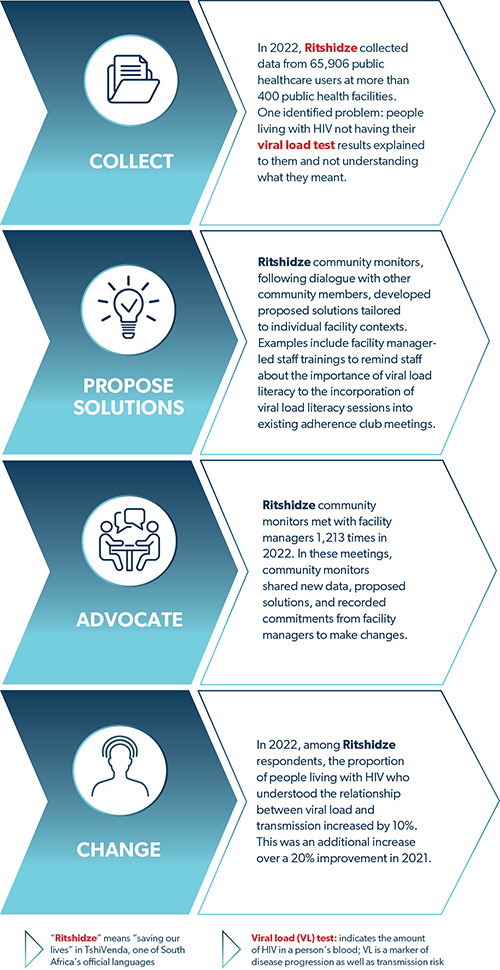Amplifying Voices

Community-led monitoring champions person-centered services

Despite exceptional progress in the global HIV response in recent decades, critical gaps persist, especially in reaching marginalized com-munities and retaining them in care. In different contexts, this includes adolescent girls and young women, and key populations most at risk for HIV like gay, bisexual, and other men who have sex with men, trans people, sex workers, and people who use drugs.
Achieving optimal HIV outcomes for these populations requires the provision of high-quality health-care tailored to meet community preferences and overcome structural barriers like stigma and dis-crimination. While many HIV programs globally aim to implement such person-centered services, there are few avenues available for civil society to draw attention to any failings and seek remedies when services fall short.
Enter community-led monitoring (CLM). CLM is part of a broader set of initiatives in international development called social accountability that create formal structures for citizens to collectively hold duty bearers to account for the quality of services provided. To be able to do so requires community members to systematically and continually collect data on health service provision, analyze those data, suggest solutions to duty bearers, and engage with them to ensure changes are made.
Importantly, community owns and leads every aspect of a CLM project. Data focus on what is most important to communities, which often encompasses a range of priorities from the availability of HIV medicines to being turned away from care due to sexual orientation. Major funders of the HIV response have begun investing in CLM projects across the world, and amfAR currently works in alliance with CLM implementers in countries like South Africa, Haiti, and Uganda to ensure community data are rigorous and readily available for advocacy.
“Community monitoring is part of a greater movement towards client-centered design and care approaches. This places users” needs, challenges, and preferences at the front of every aspect of service delivery. In turn, you’ll build more intuitive, accessible products and services that are likely to achieve the intended results,” says Like Chimhanda, Strategic Information Officer, Advocacy Core Team, Community-led Monitoring, Zimbabwe.
The data coming out of these projects have proven invaluable in advocacy from the facility level up to national policymaking. Historically, when community has been invited to participate in planning for major HIV programming with domestic governments or multilateral initiatives, they have often lacked the data to support their priorities. The generation of community-owned data during CLM elevates the voices of communities in these rooms and makes it far harder for their concerns to be dismissed. Meaningfully centering the voices of people living with HIV in the response takes us closer to the provision of truly person-first care and ending the epidemic; CLM is a powerful tool for doing just that.
Elise Lankiewicz is policy associate in amfAR’s public policy office.
SAVING OUR LIVES
Local HIV advocates and organizations launched the Ritshidze Community-Led Monitoring Program in South Africa in 2019 to monitor HIV, TB, and other health service delivery with the aim of improving primary healthcare services for all people in the country. amfAR provides the program with implementation and technical support.
The graphic below shows how community-led monitoring can effect positive change.

RELATED CONTENT
TREAT Asia Launches Community-Led Monitoring Dashboard
amfAR’s TREAT Asia program in 2023 launched an online data dashboard to enhance ongoing community-led monitoring in India and Indonesia.
World AIDS Day 2023: Let Communities Lead
amfAR’s community-led monitoring projects align with this year’s World AIDS Day theme.
Quality of care for key populations at public health facilities in South Africa: findings from Ritshidze’s Community-Led Monitoring
amfAR’s Elise Lankiewicz presented this abstract at the 2023 International AIDS Society Conference.